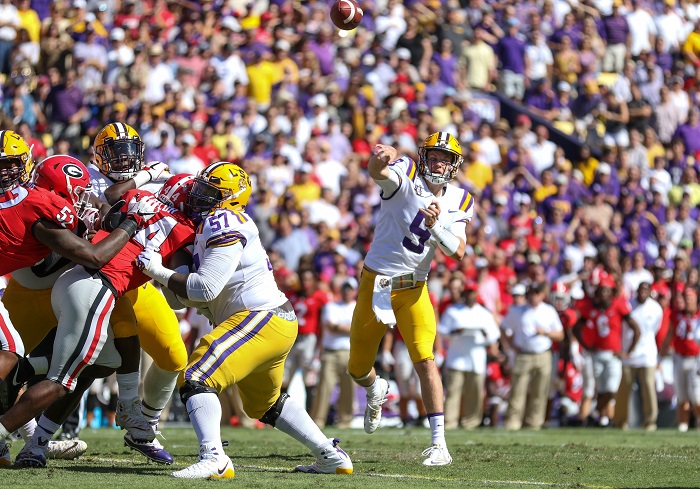
It’s an offensive attack not designed to overpower the opposition or hang crooked numbers on the board, but rather to probe for weakness and scratch across scores when possible.
It tests the assignment discipline of the opposition, because defensive mistakes are the avenue to offensive outbursts. Doing the same thing over and over again and forcing the opponent to make the plays over and over again.
Sounds a bit like defending Navy or Georgia Tech on a football field, doesn’t it? A scheme based more on execution than athleticism or explosiveness. Instead it’s the baseball equivalent known for its prominence out on the West Coast.
LSU expects a heavy diet of bunts, hit-and-run and other small ball from the San Diego State team it’ll face Friday in the opener of the Corvallis Regional, and if the Tigers get a shot at Oregon State, they know they’ll see even more West Coast small ball played at an even higher level.
“It sure does put a lot of pressure on a defense,” LSU coach Paul Mainieri said. “It’s kind of chasing a wishbone offense or an option offense. Everybody has got to know their assignments and communicate real well to make sure we don’t screw up plays and give them more then we should. If they want to give us an out, we’ve got to get an out.”
It’s not a brand of baseball LSU sees much in the Southeastern Conference, where the homer-happy likes of Florida and Arkansas have come to dominate the league.
Both San Diego State (.305) and Oregon State (.318) rank among the top 10 in Division I in terms of batting average. Combined with those bunts, stolen bases and hit-and-runs, their respective attacks are built around the idea of creating traffic and chaos on the base paths.
That’s what LSU’s pitchers and fielders need to be prepared for if the Tigers are going to have success out west this weekend.
“You’ve got to be alert because they’ll do some different kinds of things to move runners and do anything they can to scratch a couple runs across,” shortstop Hal Hughes said. “We’ve just got to be on our best game defensively and locked in on every pitch.
“It’s not really a brand of baseball that is played down south. I’m not saying that we’re not going to be used to it or ready for it, but it’s just something we’ve got to be ready for.”
Oregon State is particularly adept at the grind-it-out style of baseball. Looking back to last summer’s College World Series, Oregon State leadoff man Steven Kwan dropped down a bunt single on the first pitch of the game that the Beavers went on to win in a 13-1 rout.
“You’ve just got to be ready for that kind of stuff at all times,” catcher Nick Coomes said. “It’s that west coast style and we don’t really play it that much, but we’ve just got to take it into mind and be ready for it at all times. It can happen the first pitch of the game. We saw that from the leadoff batter in Omaha.”
The key is to not compound matters by blowing an assignment of failing to get an out when a team is willing to give one. That means pitchers not getting cute and walking a batter who is trying to sacrifice himself and fielders making the sure play once said bunt is laid down.
“Hey, if the other teams wants to sacrifice bunt, I’ll walk up and hand them the ball to bunt it,” Mainieri said. “Let’s get the out and then we’ll pitch out of it. Where you get in trouble is you walk the guy who is trying to bunt and then the next guy guys. Now you’ve got second and third.”
Adding in another wrinkle, LSU must play its best defense of the season on the artificial turf of Goss Field in Corvallis. Between midweek games at Southeastern, UL-Lafayette and Tulane, plus a series at Vanderbilt, LSU is 1-5 on artificial turf so far this season.
Mainieri feels that can be corrected through some extra preparation time. LSU practiced on the artificial turf field used by University High on Tuesday and Wednesday, doing everything from stretching to fielding bunts and playing three-man ball on the carpet to prepare for the slow turf of Goss Field.
“This is the first time we’ve actually had a chance to practice on turf before going to play a turf game because we’ve always played the night before or had to give the players a day off,” Mainieri said. “I’m excited to have a couple of days to get used to the feel of being on turf.”
For what it’s worth, LSU is tied for the ninth-best fielding percentage in Division I at .980. That’s sure to be tested with the season on the line by the likes of San Diego State and Oregon State in Corvallis.




Be the first to comment